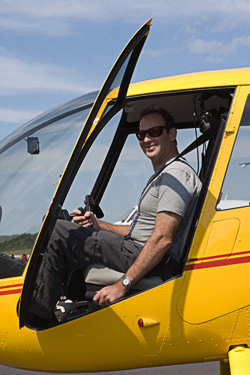 This document summarizes my qualifications to be an expert witness in
software-related lawsuits as well as in matters before the
International Trade Commission and Patent Trial and Appeal Board
(PTAB).
This document summarizes my qualifications to be an expert witness in
software-related lawsuits as well as in matters before the
International Trade Commission and Patent Trial and Appeal Board
(PTAB).
I have also provided claim construction tutorials in Federal court (example).
I have worked for the United States Department of Justice, the Office of the Attorney General of Massachusetts, and the Federal Public Defender.
I am the author of five computer science textbooks in total, including Database Backed Web Sites (Macmillan; 1997) and an SQL language tutorial.
I started my first full-time programming job at the age of 14 in 1978 at NASA's Goddard Space Flight Center, building a database management system for scientific data being streamed back from the Pioneer Venus orbiter.
I worked my way through the Massachusetts Institute of Technology, paying for tuition and living expenses with a series of computer programming jobs. I graduated in 1982 with a Bachelor of Science in Mathematics and went to work for Hewlett-Packard Research Labs, building design tools to assist with the development of the HP Precision Architecture RISC computer, which came the core of the HP product line and eventually formed the basis of Intel's 64-bit CPU chips.
During the 1980s, I was the author of a computer system that automated the design of large steel structures, such as offshore oil rigs. After a mechanical engineer specified a set of design rules, a manufacturer of semi-custom products could type in the customer specifications and the software would generate a three-dimensional model and blueprints. I also built a computer system to assist civil engineers and earthmoving contractors.
Starting in the early 1980s, I built a series of collaborative Internet applications, computer programs that enabled people to work together, even if they were sitting at separate computers, perhaps in different parts of the world, and possibly at different times. Beginning in 1993, I transferred my efforts in collaborative Internet applications from custom interfaces to the World Wide Web. One of my first projects, was photo.net, an online community for photographers. Photo.net incorporated all of the features commonly referred to as "Web 2.0", including an emphasis on user-generated content. In 1994, I built the world's first Web-based electronic medical record system for Boston Children's Hospital. This used the Oracle RDBMS as its backend.
In 1995, I moved to Manhattan to supervise the construction of Hearst Corporation's Internet infrastructure. As Hearst owned magazines, newspapers, TV stations, and cable TV networks, we built virtually at least one of everything that a 1990s Web publisher ever built. I built a catalog-shopping ecommerce system with shopping carts, one-click ordering, referral tracking from other sites, ad serving, clickthrough tracking, and user session tracking. I built a classified ad system that had a user reputation system, auctions, and most of the other features of the early eBay. I built discussion forums, user comment facilities, moderation systems, publishing workflow systems, contest systems, and polling systems.
Upon moving back to Boston, I refocused my energies on photo.net, which became the testbed for my Ph.D. thesis at MIT. With a small group of friends, I packaged up the software behind photo.net and released it as the ArsDigita Community System (ACS), which became a popular toolkit for companies worldwide who were developing online communities and ecommerce sites. As part of photo.net or ACS, I supervised the design and construction of modules for content management, user directories, data warehousing, university course management, online file storage and sharing, "homepage" construction, broadcast email to registered users (called the "spam" module), ticket tracking, social bookmarking (similar to the popular Delicious service), project management, and WimpyPoint, a collaborative Web-based replacement for PowerPoint. ACS became sufficiently popular with Fortune 500 companies that we were able to start ArsDigita, a support and service company for the free and open-source software.
After selling ArsDigita, which had grown to 80 programmers and $20 million per year in revenue, I scaled back my involvement in the commercial world to advisory and corporate board membership. I completed a new textbook for my software engineering course at MIT, which I was teaching on an occasional basis, and learned to fly (current holder of FAA Airline Transport Pilot and Flight Instructor certificates for both airplanes and helicopters). In 2006, I went back to a 24/7 desk job, taking over management of photo.net, which I had spun off to a group of entrepreneurs in 2000. They'd borrowed money and were hoping to turn my hobby/research site into a business. Their timing was unfortunate and by 2006 the debt plus interest had crippled the balance sheet. I led an effort to reengineer and document the software and hardware behind the site, update the content, and look for ways to boost revenue sufficiently to service the debt. The effort concluded with a 2007 sale of the enterprise to NameMedia, which enabled paying the original creditors in full, including promised interest.
More: resume.
I also have experience in aviation and have served as an expert in helicopter crash matters. My experience with digital photography and Internet photo-sharing systems led to work with Microsoft on a copyright matter.